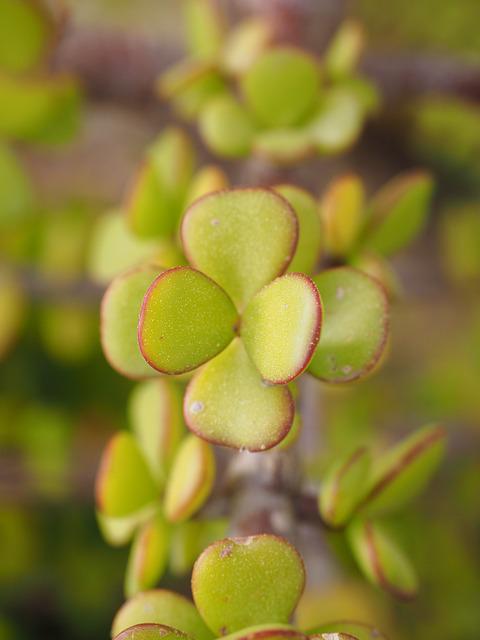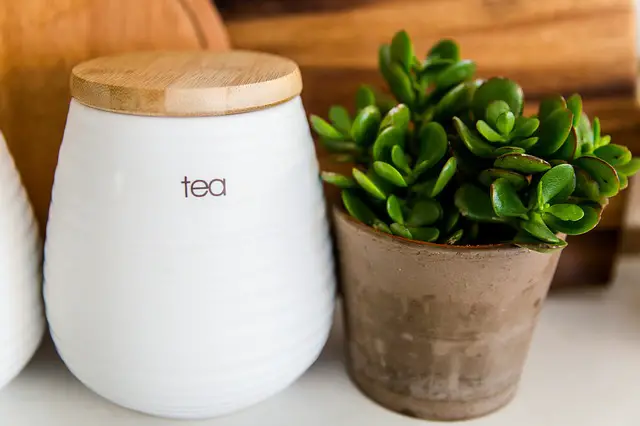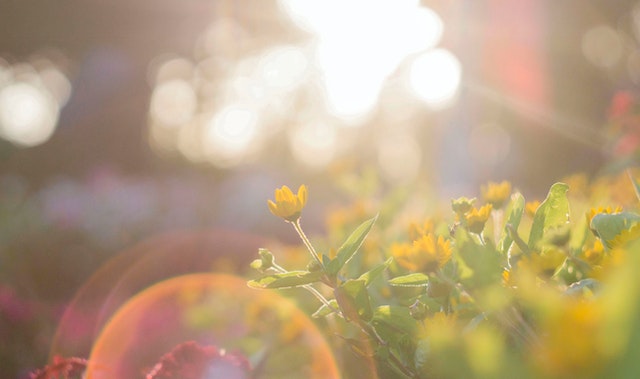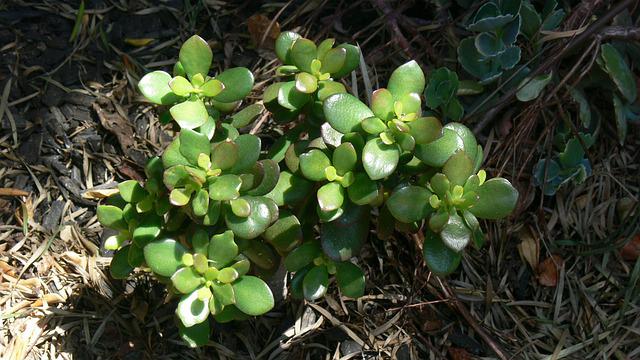Jade plant sunburn is a disturbing factor for many gardeners. These exotic succulents, with their small, rounded leaves and reddish stems, are a welcome addition to any home or office. Being native to South Africa, jade plants love bright light and warm weather. This houseplant is versatile and easy to care for and doesn’t require much fuss or care.
However, if they receive too much sunlight, they can develop sunburn – a condition that can affect the long-term health and irreversibly damage the appearance of your jade plant.
To prevent sunburn and keep your jade plant looking its best, it’s important to provide it with the right amount of light and shade, depending on the season and your climate. With a little bit of attention and care, your jade plant can thrive for many years to come.
Jade plants need bright light, but it should be indirect and not expose your jade plant to direct sunlight. Signs that your jade plant may be suffering from too much sun exposure are:
- crisp, yellow leaves
- brown spots
- leaves unusually soft to the touch
- drooping leaves and branches
In this article, we will cover the causes of jade plant sunburn, the effects on your plant, and how to remedy a sunburned jade plant.
How Much Sunlight does my Jade Plant Need?

Jade plants need roughly six hours of bright, indirect light. While you can keep them in a windowsill for short periods of time, be wary of the window in which you place your jade plant, since south-facing windows will be too bright for your jade plant.
Keep in mind that jade plants can get sunburned through glass, so consider a sheer or gauzy curtain that will filter the sunlight and make your windows more habitable for your jade plant.
What Causes Jade Plant Sunburn?
Too much direct sunlight causes jade plants to become sunburned. While jade plants thrive with bright, indirect light and warm climates, too much sunlight will burn their leaves and cause irreversible damage to your plant’s appearance.
If you water your jade plant while it is in direct sunlight, the water droplets on the leaves may magnify the sun’s rays and focus the burns into those spots. If you notice that your sunburned jade plant has dark holes in the leaves, keep in mind that these holes may be the shape of the water droplets.
Signs of Sunburned Jade Plant
Since jade plants can show signs of sickness for a number of reasons, such as poor soil quality or overwatering as well as too much sun exposure, knowing what to look for is key in identifying a sunburned jade plant.
1. Yellow Leaves
Too much exposure to sunlight dehydrates the plump green leaves of your jade plant and will cause them to lose their vibrant pigment, becoming discolored and yellow.
2. Brown Spots
Concentrated sun’s rays coming through water droplets on your jade plant’s leaves can cause spots. These spots usually start out as discolored and yellow, but quickly turn brown.
3. Soft Leaves
With too much sun exposure, the leaves lose moisture, turning them softer to the touch. These softer leaves are usually discolored as well and have lost their vibrant green color.
4. Crisp Leaves
Crisp leaves are a side effect of the severe dehydration that occurs to your jade plant when exposed to too much sunlight.
5. Drooping Branches and Leaves
When the branches and leaves become soft and droopy, this is a sign of severe dehydration in your jade plant due to too much sun exposure.
What should I Do When my Jade Plant Becomes Sunburned?

Depending on the severity of the sunburn, your jade plant may or may not recover. But don’t worry – in mild and even some moderate cases, jade plants recover from sunburn.
1. Relocate Plant
The first thing to do when you notice signs of sun damage to your jade plant is to relocate your plant to a shady area. This will cut down on the stress the plant has already endured by being exposed to the sunlight, and it’ll recover better if placed in shade.
2. Remove Burned Leaves and Stems
While leaves showing minor signs of sun damage (yellow discoloration; softer than usual) can recover on their own when the plant is relocated, leaves and small stems that have brown spots or are crispy won’t recover and will need to be removed for the health of the whole plant.
While crispy leaves and other highly burned leaves may fall off on their own, they are an eyesore that you are better off removing yourself.
If you are unsure whether to remove a sunburned leaf, keep in mind that brown spots will never disappear while yellow discoloration can recover. If the sun damage to the leaves appears to affect more than half of the leaf, it’s best to remove it altogether.
To remove burned leaves or minor stems, you’ll need to sever them off at the nodes. For leaves, this is where the leaf meets the stem. For smaller stems, this is the point where each stem offshoots from a larger stem.
3. Rehydrate Plant
Because sun damage will quickly dehydrate your plant, make sure to water it well after relocating it to a shadier area. This will cause droopy, soft leaves and stems to become firm once more. As a rule of thumb, jade plants should be watered once you notice the topsoil is dry.
4. Fertilize
Because sun damage makes it hard for your jade plant to get sufficient nutrients, fertilizing a sunburned jade plant is always a great idea. Use a very mild fertilizer.
What to do in Severe Cases of Sunburn

With mild damage, leaves and smaller stems can be removed without causing long term damage to the plant, but this isn’t the case in cases of severe sunburn.
In severe cases of sunburn, the main stem of the plant has been damaged. When this happens, the jade plant can’t be saved.
In some cases, you might be able to propagate a healthy stem from your jade plant, as long as the stem you choose doesn’t have any visible damage. This can be difficult but not impossible to find even when the jade plant is severely sunburned.
Like most houseplants, jade plants can be propagated through the stem cutting method and by placing the stem cutting in water until new roots sprout.
How can I Prevent my Jade Plant from Becoming Sunburned?
Knowing the signs of sun damage is key. But to avoid your jade plant from getting sunburned in the first place, keep it in an area with bright but indirect sunlight.
See a related post: Sunburnt Fiddle Leaf Fig
Summary
Sun damage doesn’t happen all at once. It’s important to be away of the risk factors and signs of sun damage in your jade plant.
In most cases, a sunburned jade plant will recover. Only cases of extreme sun damage will kill your plant. The signs of sunburn in jade plants are brown spots, discolored leaves and stems, soft leaves, and drooping stems and leaves.
To help a jade plant recover, transfer it to a shadier area, remove damaged leaves and stems if needed, water it, and give it a mild fertilizer to replace lost nutrients.
Frequently Asked Questions
Can jade plants recover after being sunburned?
Yes, in most cases. If the leaves or smaller stems are sunburned, the jade plant will likely recover. But if the main stem shows signs of sunburn, there is no way to save the plant.
Should I cut off scorched leaves?
Only if the damage to the leaves is more than half the leaf. If the leaves have dark spots, keep in mind that these spots won’t disappear, and you might prefer to remove them.
Do jade plants like direct sunlight?
No. Jade plants thrive in bright, but indirect, sunlight.

Hey, I’m Lisa and I’ve been an avid gardener for over 30 years. I love writing, talking and living in the garden! Feel free to connect with me on my socials below

